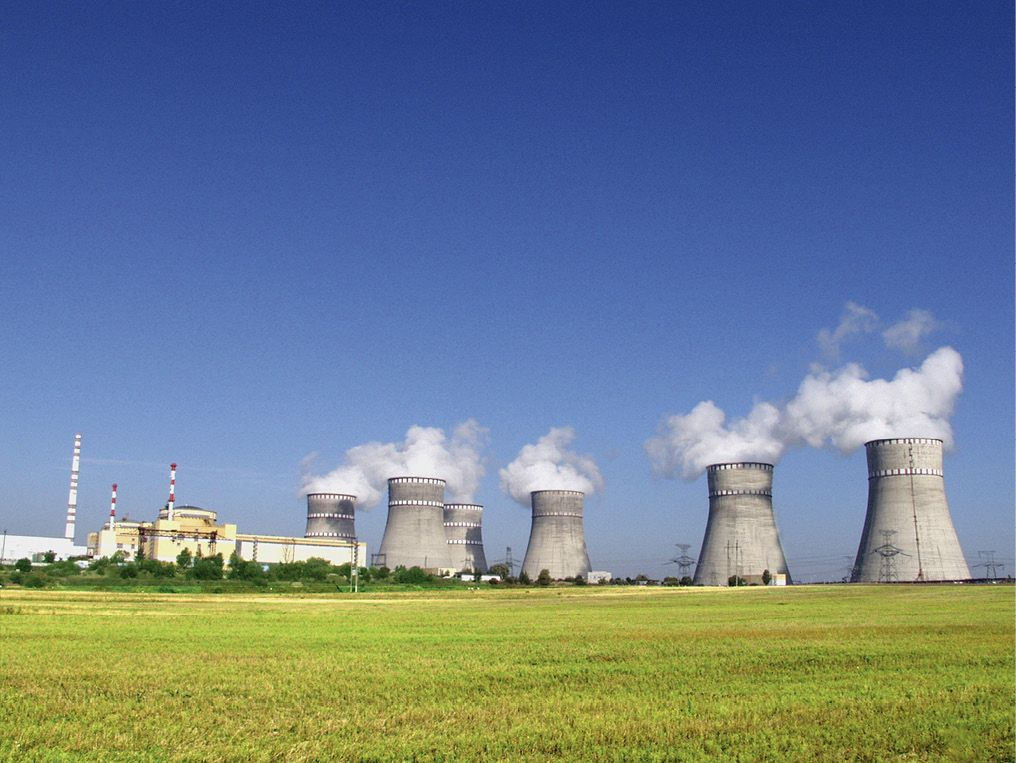The risk of a nuclear incident in Ukraine is extremely high. In 2022, Ukraine not only became the arena for a level of military aggression in Europe not seen since World War II, but a testing ground for the cynical use of nuclear facilities as a tool for intimidation and blackmail. When news of the shelling of the Zaporizhzhia nuclear power plant emerged in April, the world was shocked. There has never before been a military conflict, using all types of modern warfare, in a country with multiple nuclear power plants. The largest nuclear site in Europe, third largest in the world – Zaporizhzhia – is directly in the combat zone.
Solving the issue of nuclear security in Ukraine and therefore, Europe, unfortunately lies more in the military-political sphere than the technological one. Russia continues to destroy Ukraine’s critical infrastructure. Before the war began, on Feb. 24, the Ukrainian and Russian energy systems had been synchronized, so all vulnerable points are known to Russia.
As of Dec. 15, Ukraine has lost 43% of its energy infrastructure, including substations and power lines, and 48% of its electricity generation capacity. These facilities will be partially restored but a significant portion will need building from scratch. And this is assuming there will be no further missile strikes against them by Russia, which is unlikely.
Miracle
It is a miracle Ukraine has managed to ensure the safety of its nuclear facilities until now. Thanks to the tireless efforts of Ukrainian and international specialists, it was possible to avoid a nuclear disaster in November that would have significantly surpassed the Chernobyl and Fukushima nuclear accidents.
Ukraine operates 15 nuclear power units with a capacity of 13.8 GW. Almost all have been in emergency mode for two months and the 6 GW Zaporizhzhia – captured by the Russians in April and put into cold mode – is not generating at all.
On Nov. 15, 2022, Russian missiles destroyed a transformer substation in the Khmelnytskyi region and cut off four 750 kV power lines, causing the Khmelnytskyi nuclear plant to lose access to electrical networks and rely on diesel generators, for over 10 hours, to cool the reactors. If those emergency systems had failed, Europe would have experienced a major incident as the reactor melted.
On Nov. 23, a missile strike caused an emergency shutdown of all power units at the South Ukraine nuclear plant. Russian rockets knocked out the high-voltage electricity line to Odesa.
The Rivne nuclear plant lost connection to a 750 kV power transmission line, causing the VVER-1000 units to shut down, and left two smaller reactors with a combined capacity of only 600 MW. This imbalance caused the disconnection of electricity for more than 70% of Ukraine, with the rest receiving electricity for only a few hours per day.
Popular content
It is difficult to stabilize the energy system during the conflict. However, it is important to note the current critical situation is also the result of centralized energy infrastructure and the Ukrainian government’s – and oligarchs’ – focus on nuclear, which has meant neglect of alternative energy sources such as renewables. Decentralization of energy supply and the development of renewables could have helped prevent the current situation, but such ideas were met with skepticism and dismissed in favor of prioritizing profit over long-term stability.
The current lack of electricity in Ukraine and the lesson the situation should serve for nuclear lobbyists everywhere highlights the importance of diversifying energy sources and considering the potential consequences of relying solely on centralized, potentially vulnerable systems.
Today, the optimal strategy for Ukraine in the energy sector would be to develop a decentralized infrastructure of co-generation plants using a variety of energy sources, including liquefied gas, ethanol, natural gas, and renewable energy sources. The idea is to create an energy cluster in each region that is tailored to local needs and opportunities.
Energy security
While this strategy may result in higher electricity prices, it would provide stability and energy security. I would also suggest building gas-fired power plants near Ukraine’s main gas pipelines, as these are Russia’s main infrastructure for supplying natural gas to Europe. It is unlikely that Russia would be willing to strike these facilities and disrupt its own gas supplies as the country heavily relies on its gas resources.
In chaos of war, it would be more beneficial for Ukraine to develop distributed generation of renewable energy sources, such as biomass, wind, and solar power with energy storage, rather than relying on centralized power plants fueled by coal, gas, and oil. This would not only make it more difficult for the enemy to destroy a large number of small energy-generation facilities but it would also reduce the country’s dependence on various types of fuel. In the future, I believe, Ukraine will shift from a testing ground for new weapons to a testing ground for the latest energy technologies. My forecast is that by 2030, half of the country’s electricity production will come from renewable sources.
 About the author: Vitaliy Daviy is co-founder and CEO of IB Centre, a leading consulting company in the emerging European market for renewable energy. IB Centre produces major clean-tech and solar trade shows and conferences in Central and Eastern Europe and Central Asia, with notable projects including CISOLAR and Solar Academy. As the founder and former president of APEU, the association of renewable energy and alternative fuels in Ukraine, Daviy has played a key role in the development of the renewable energy industry in Ukraine.
About the author: Vitaliy Daviy is co-founder and CEO of IB Centre, a leading consulting company in the emerging European market for renewable energy. IB Centre produces major clean-tech and solar trade shows and conferences in Central and Eastern Europe and Central Asia, with notable projects including CISOLAR and Solar Academy. As the founder and former president of APEU, the association of renewable energy and alternative fuels in Ukraine, Daviy has played a key role in the development of the renewable energy industry in Ukraine.
The views and opinions expressed in this article are the author’s own, and do not necessarily reflect those held by pv magazine.
This content is protected by copyright and may not be reused. If you want to cooperate with us and would like to reuse some of our content, please contact: editors@pv-magazine.com.


I can’t believe what I’m reading! Contrary to the author’s argument, Ukraine had >16 GW of renewables installed before the war (mostly hydro and solar). Unfortunately, >50% of their solar and >90% of their wind capacity has been destroyed by the war. Before the war, Ukraine had a carbon intensity on par with Germany, with about 1/3 of their power generated each by coal and gas. Yet the author ignores these sources to try and take pot shots at carbon-free nuclear power (which is also very low cost in the Ukraine as the reactors were all built decades ago). Worse, the author argues for the expansion of fossil “liquefied gas” and “natural gas” !!!
The lesson from the Ukraine war is not that nuclear is dangerous, it is that relying on fossil fuels produced by foreign unfriendly nations is inherently and unavoidably bad for energy security and affordability. This is in ADDITION to the climate crisis elephant in the room.
I have no doubt Ukraine will build back with cleaner grid than they’ve ever had before. Their lived trauma will also ensure that European Bureaucrats won’t be able to wave away concerns about Russian Gas (while getting checks from Gazprom) and con them into continued dependence on fossil fuels.